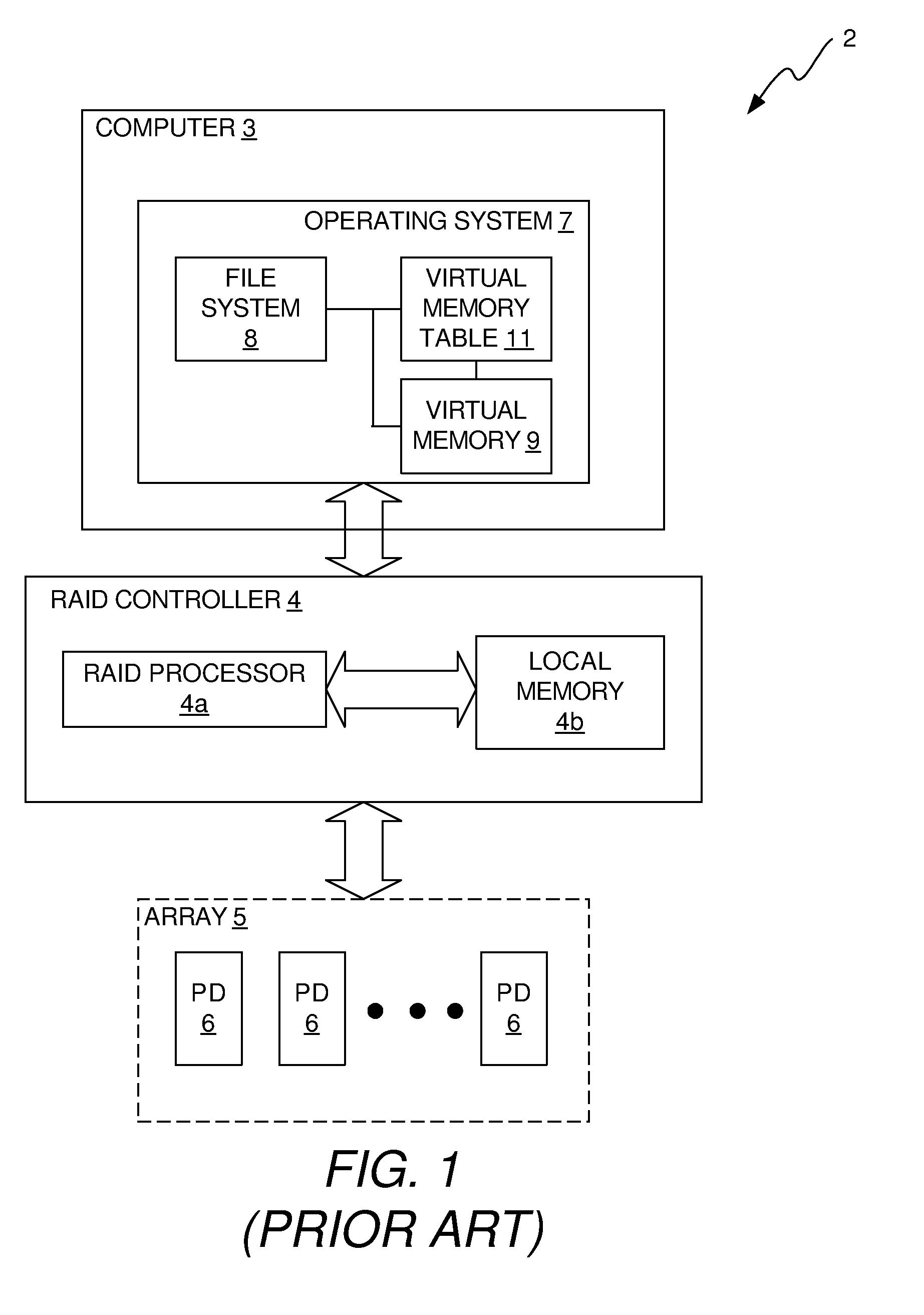Redundant array of inexpensive disks (RAID) system configured to reduce rebuild time and to prevent data sprawl
a technology of inexpensive disks and arrays, applied in the field of storage systems, can solve the problems of consuming a large amount of resources, affecting system performance during the rebuild process, and taking a long time to perform, so as to reduce the amount of time, prevent data sprawl, and reduce the effect of rebuilding tim
- Summary
- Abstract
- Description
- Claims
- Application Information
AI Technical Summary
Benefits of technology
Problems solved by technology
Method used
Image
Examples
Embodiment Construction
[0025]In accordance with a first aspect of the invention, a filter driver is provided in the OS of the computer of the RAID system that, in the event that one of the PDs is to be rebuilt, scans the virtual memory table of the computer to identify virtual memory addresses that are used and communicates the identified virtual memory addresses to the RAID controller. The RAID controller translates the identified virtual memory addresses into physical addresses of the PD being rebuilt. The RAID controller then rebuilds data and parity only for physical addresses in the PD that are associated with the virtual memory addresses identified by the filter driver. This reduces the amount of data and parity that are rebuilt during a rebuild process and reduces the amount of time that is required to perform the rebuild process.
[0026]In accordance with a second aspect of the invention, data is stored in the PDs in a way that limits data sprawl. By limiting data sprawl, the number of addresses in ...
PUM
 Login to View More
Login to View More Abstract
Description
Claims
Application Information
 Login to View More
Login to View More - R&D
- Intellectual Property
- Life Sciences
- Materials
- Tech Scout
- Unparalleled Data Quality
- Higher Quality Content
- 60% Fewer Hallucinations
Browse by: Latest US Patents, China's latest patents, Technical Efficacy Thesaurus, Application Domain, Technology Topic, Popular Technical Reports.
© 2025 PatSnap. All rights reserved.Legal|Privacy policy|Modern Slavery Act Transparency Statement|Sitemap|About US| Contact US: help@patsnap.com



